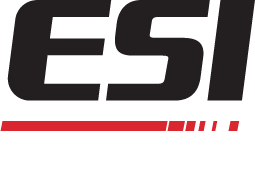Chinaplas 2016
Preparing for Chinaplas 2016 Conference
Chinaplas 2016 is just around the corner, and we’re excited to showcase why EB inks and web offset printing are such an incredible choice for food packaging. Primarily, electron beam inks are food safe and versatile, meaning they can safely be used on a broad range of food packages. Moreover, they can be utilized to create numerous effects with different types of labels, so they have a wide appeal with many different manufacturers and food packagers. What's more, using EB inks for your food packaging applications can help you save money in terms of reduced energy costs and lower ink use.
In preparation for the Chinaplas conference, today we’ll go into further detail on the reasons why EB inks and web offset printing are so great for food packaging, and how they can help you cut down on costs.
Electron Beam Inks for Food Packaging
EB inks are food safe, and FDA approved for use in food packaging applications, which makes them ideal for all different types of functions, including:
- Beverage and water bottles
- Meat film
- Salty snack bags
- Chocolates and sweets wrappers
- Cardboard and tetra containers
- Highgloss food labels
- Foodgrade poly bags
EB inks also cure instantly, are stable, and are scuff and chemical-resistant plus they don’t have any extractables or odors, meaning they are even great for sensitive products like dairy, pet foods, and pharmaceuticals. Because ebeam inks are cold seal compatible and resistant to freezer burn, they can also be used in frozen and cold food applications. And since EB inks are moisture resistant and lend themselves to a high print quality, they can also be used for high-end labels and food packaging containers for liquids.
Food-Friendly and Earth-Friendly
Unlike certain inks that were used with regularity, EB inks are free of volatile organic compounds, which are major contributors to air pollution and poor air quality. Electron beam inks are also environmentally friendly in the sense that they don’t require any solvents to cure, and don’t give off any emissions or evaporations. So not only are EB inks a foodsafe choice for all your packaging needs, but they're also a responsible choice for the environment.
A Direct Line to Cost Savings
Traditionally, the major drawback to web offset printing with EB inks was the capital cost of the equipment. And while the printers themselves can still be slightly pricier than other options, EB printers are now half the price they used to be. Furthermore, one of the significant cost savings associated with EB printing is the ink itself, because EB printing uses a fraction of the ink that a traditional printer would. This material savings is due to the higher solid content and higher pigment loading.
Additional savings from switching to EB can be experienced because this printing method requires no expensive photoinitiator and no solvent capture. Similarly, noheat curing means less energy consumed during the printing process, and everyone knows that lower energy costs translate to more money in your pocket.
Web offset printing and EB inks are an excellent choice for the environment and your wallet. And because they’re versatile, food safe, and FDA approved, they are also ideal for all your food packaging applications, whether you specialize in beverage bottles, frozen foods, or produce packaging. We look forward to sharing our expertise with anyone attending Chinaplas 2016.
If you have questions or would like to contact us before or after the event to discuss how EB can help your business reduce costs and increase efficiencies, please feel free to contact us.

